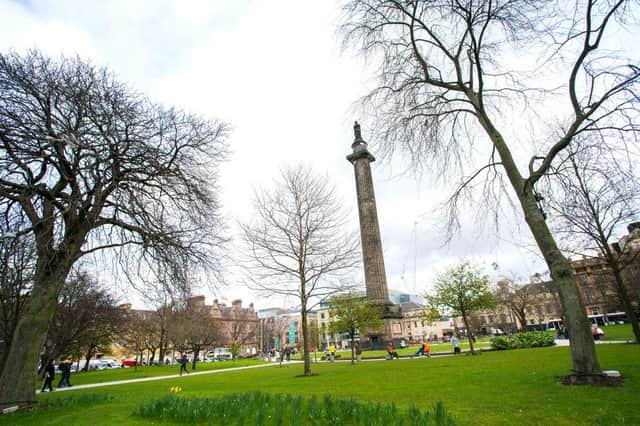Proposed wording for Henry Dundas plaque on Edinburgh's Melville Monument revealed


The proposed wording for a plaque to be placed on a controversial statue at the centre of a racism row in Edinburgh is to be debated tomorrow.
Council leaders want to place a new plaque on the imposing Melville Monument to Henry Dundas, the first Viscount Melville, in St Andrew Square acknowledging the 18th century politician’s links to the slave trade.
Advertisement
Hide AdAdvertisement
Hide AdA debate on the wording will be taken to a council committee vote tomorrow.
In light of global Black Lives Matter protests and renewed calls for the council to acknowledge Edinburgh’s more shameful past, the plaque aims to highlight Henry Dundas’ role in delaying the abolition of slavery.
Wording for the plaque was agreed upon on Tuesday by a panel comprising Edinburgh City Council Leader Adam McVey, Deputy Council Leader Steve Cardownie and the city’s first black professor, Sir Geoff Palmer.
Input was also received from Edinburgh World Heritage, Edinburgh University, Cllr Donald Wilson and Cllr Amy McNeese-Mechan.
The words read: “On the plinth at the centre of St Andrew Square stands a neoclassical column with a statue at the top. This represents Henry Dundas, 1st Viscount Melville (1742 – 1811). He was the Scottish Lord Advocate and an MP for Edinburgh and Midlothian, and the First Lord of the Admiralty. Dundas was a contentious figure, provoking controversies that resonate to this day. While Home Secretary in 1792 and first Secretary of State for War in 1796 he was instrumental in deferring the abolition of the Atlantic slave trade. Slave trading by British ships was not abolished until 1807. As a result of this delay, more than half a million enslaved Africans crossed the Atlantic. Dundas also curbed democratic dissent in Scotland.
“Dundas both defended and expanded the British empire, imposing colonial rule on indigenous peoples. He was impeached in the United Kingdom for misappropriation of public money and although acquitted, he never held public office again. Despite this, the monument before you to Henry Dundas was funded by voluntary contribution from officers, petty officers, seamen and marines and erected in 1821, with the statue placed on top in 1827.
“In 2020 this was dedicated to the memory of the more than half a million Africans whose enslavement was a consequence of Henry Dundas’s actions.”
The Council’s Policy and Sustainability Committee will vote whether to approve the wording at a meeting on tomorrow.
Advertisement
Hide AdAdvertisement
Hide AdCllr Adam McVey said: “I know there are many who would remove these statues and I know there are those, like Professor Geoff Palmer, who say ‘if you remove the evidence, you remove the deed’. We need to make sure any steps we take serve to educate and highlight all sides of Edinburgh’s story – the good and the bad. We should not hide from that. It’s important to also recognise the issues we have now and in understanding our history, we can help tackle prejudice in Edinburgh in 2020.”